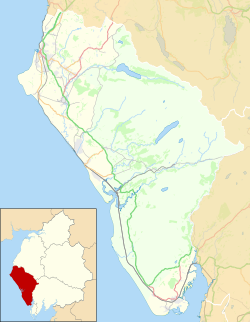| Eskett | |
|---|---|
 Eskett Quarry | |
Location within Cumbria | |
| OS grid reference | NY052171 |
| Civil parish | |
| Unitary authority | |
| Ceremonial county | |
| Region | |
| Country | England |
| Sovereign state | United Kingdom |
| Post town | FRIZINGTON |
| Postcode district | CA26 |
| Dialling code | 01524 |
| Police | Cumbria |
| Fire | Cumbria |
| Ambulance | North West |
| UK Parliament | |
Eskett is a hamlet in Cumbria, England. Geologically it is known for its limestone formation. [1]

